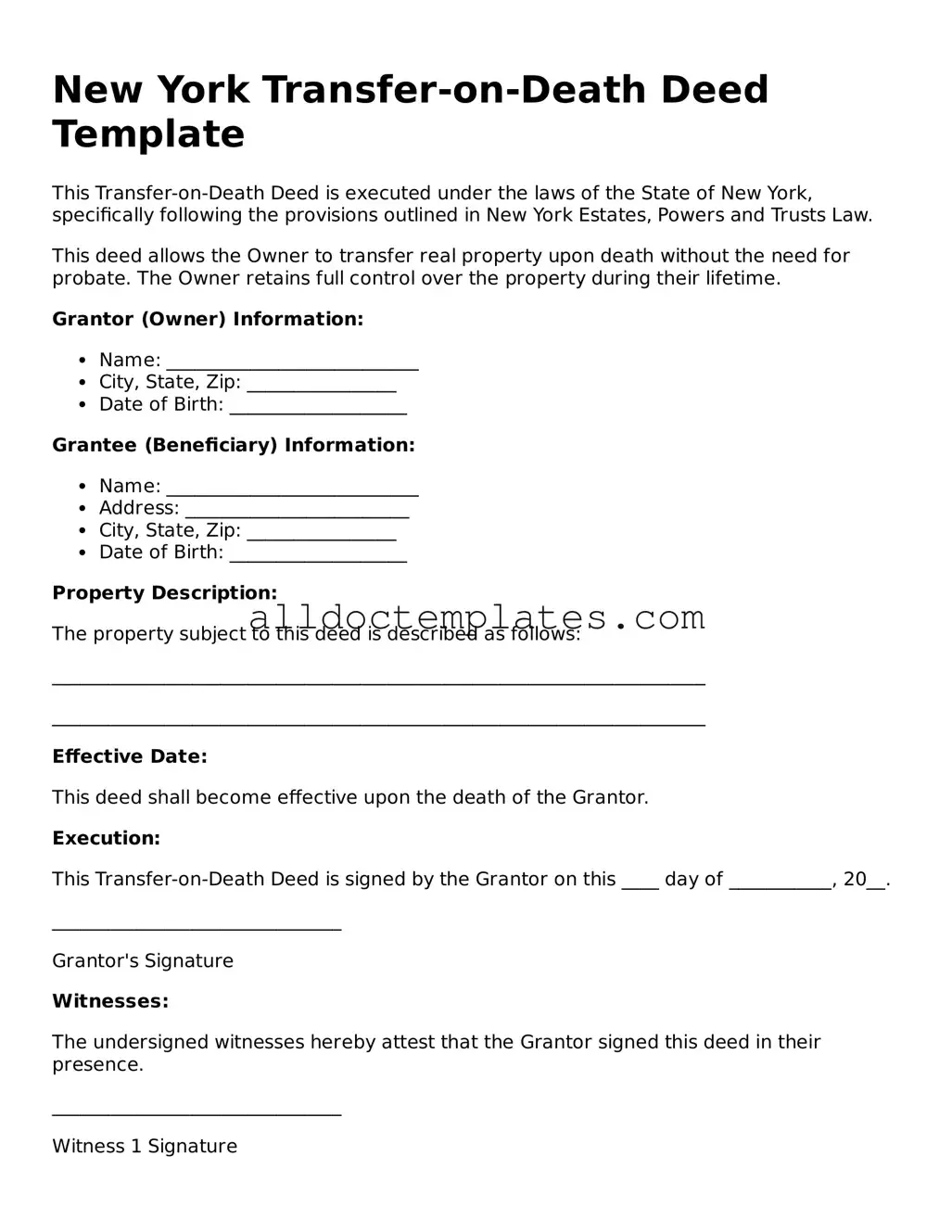New York Transfer-on-Death Deed Template
This Transfer-on-Death Deed is executed under the laws of the State of New York, specifically following the provisions outlined in New York Estates, Powers and Trusts Law.
This deed allows the Owner to transfer real property upon death without the need for probate. The Owner retains full control over the property during their lifetime.
Grantor (Owner) Information:
- Name: ___________________________
- City, State, Zip: ________________
- Date of Birth: ___________________
Grantee (Beneficiary) Information:
- Name: ___________________________
- Address: ________________________
- City, State, Zip: ________________
- Date of Birth: ___________________
Property Description:
The property subject to this deed is described as follows:
______________________________________________________________________
______________________________________________________________________
Effective Date:
This deed shall become effective upon the death of the Grantor.
Execution:
This Transfer-on-Death Deed is signed by the Grantor on this ____ day of ___________, 20__.
_______________________________
Grantor's Signature
Witnesses:
The undersigned witnesses hereby attest that the Grantor signed this deed in their presence.
_______________________________
Witness 1 Signature
Name: ___________________________
_______________________________
Witness 2 Signature
Name: ___________________________
Notary Acknowledgment:
State of New York, County of _______________.
On this ____ day of ___________, 20__, before me personally appeared the Grantor, known to me to be the person whose name is subscribed above, and acknowledged that they executed this deed.
_______________________________
Notary Public Signature
My Commission Expires: _____________
